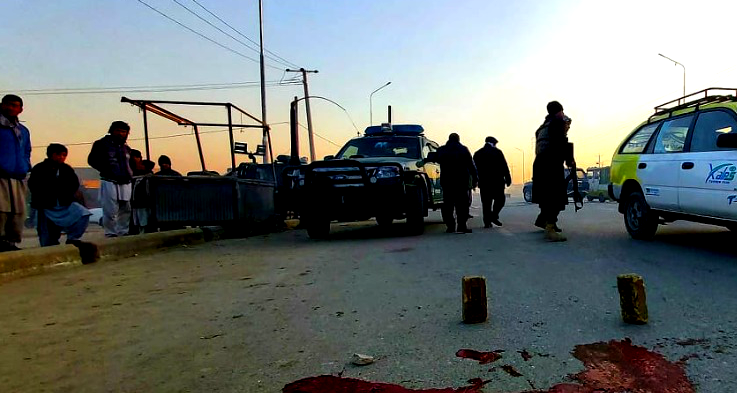About a month and a half after the negotiations stopped, the government and Taliban negotiating teams returned to the table. The negotiators confirmed that the leaders and a number of members of the government and Taliban negotiating delegations had met, and stressed the need to continue negotiations and prepare an agenda. As the talks resumed, the United Nations Assistance Mission in Afghanistan (UNAMA) announced an increase in civilian casualties during the talks. According to the findings of this institution, the percentage of civilian casualties in the fourth quarter of 2020, compared to the same time in 2019 has increased. Thus, the start of peace talks in Doha has not been able to reduce civilian casualties. In addition, the Taliban have been blamed for 45 percent of civilian casualties. The Taliban, however, described the outcome of the UNAMA report as “incomplete” and called it “biased.” For its part, the government believes that the Taliban are responsible for most of the civilian casualties because they have paved the way for terrorist groups to operate. UNAMA has again pointedly criticized the Taliban, as the group’s peace deal with the United States is currently under the scrutiny of the Biden administration. The United States has said it is assessing some of the issues, including the continuing violence by the Taliban.
Exactly 38 days after the cessation of negotiations, the government and the Taliban have returned to the negotiating table. A government negotiating team in Qatar confirmed on Monday evening, February 22, that leaders and a number of members of the government and the Taliban had met in Doha. During the meeting, the parties stressed the importance of continuing the intra-Afghan peace talks. In addition, it is stated that working groups should continue to discuss agenda items. The Taliban also confirmed the resumption of peace talks in a tweet. Mohammad Naeem, the spokesperson for the group’s political office in Qatar, said the meeting was held in a “good atmosphere”.
The government’s negotiating team stressed the “decisive continuity of negotiations” at the third peace consensus meeting. Mohammad Masoom Stanikzai, head of the government’s negotiating team, told the virtual meeting on Tuesday (February 23) that the talks should proceed “logically” and based on “Afghan priorities”. “During the talks, we showed that we can overcome problems and we must continue this process resolutely,” he added. According to Mr. Stanikzai, members of the government’s negotiating team are always ready for Islamic discussions on related issues, and female members of the negotiating team have also been able to establish “effective communication” with women in Islamic countries. Meanwhile, representatives of countries and international organizations during the meeting stressed the need to continue negotiations and stop the violence.
The negotiations have worsened the situation for civilians
As the peace talks resumed, the UNAMA announced an increase in violence during the peace talks. According to the agency, 3,035 civilians were killed and 5,785 were injured last year. UNAMA said that while violence fell by about 15 percent in 2020 compared to 2019, the fourth quarter of last year (which includes the intra-Afghan talks) was bloodier than the same time in 2019, contrary to expectations of civilians. In its report, UNAMA described Afghanistan as the deadliest place for civilians.
According to UNAMA statistics, civilian casualties gradually increased in 2020 and peaked in the last months. Thus, 524 were killed and 823 injured in the first quarter of the year, 740 were killed and 1,388 injured in the second quarter of the year, 840 were killed and 1,673 injured in the third quarter of the year, and 891 were killed and 1,901 injured in the fourth quarter of the year. In the most significant cases, 36% of civilian casualties were due to ground warfare and 34.5% of civilian casualties were due to landmines or bombs. 872 people were killed and 2,282 others were injured in the clashes. Bomb blasts killed 872 civilians and injured 2,170 others. Targeted killings, airstrikes, explosive remnants of war and more have been cited as the causes of casualties.
UNAMA said the Taliban accounted for 45% of the casualties, security forces 22%, nine unidentified opposition figures 9%, ISIS 8%, and international forces, pro-government groups and unidentified pro-government forces 1%. The number of Taliban casualties has risen by 11 percent, according to UNAMA. In addition, the death toll from targeted killings is about 45 % higher than in 2019. In addition, casualties from security forces airstrikes have increased by 125%, the highest since UNAMA (2009) began its annual survey. Based on these statistics, the number of female casualties in violence has increased by about 13% compared to 2019, and in addition to child casualties, it accounts for 43% of the total civilian casualties.
The Taliban, however, called the UNAMA report “biased” and described it as “flawed.” According to the group, the results of the study were shared with the Taliban, but the group’s “concerns, accurate information and real details” were “not taken into account”. Reacting to the report, the National Security Council said that “complete care” should be taken in collecting the figures. According to the council, the Taliban are responsible for most of the casualties because they have provided a breeding ground for other terrorist groups in the country.
The figures come five months after the start of peace talks, with about 500 civilians alone killed or wounded in targeted attacks in the capital. Earlier, the new US administration announced that it was evaluating the Doha Agreement to determine the Taliban’s commitment to reducing violence, severing ties with terrorist groups and the group’s meaningful contribution to peace. Thus, the United States is to decide on the withdrawal of its troops from Afghanistan after reviewing the agreement.












